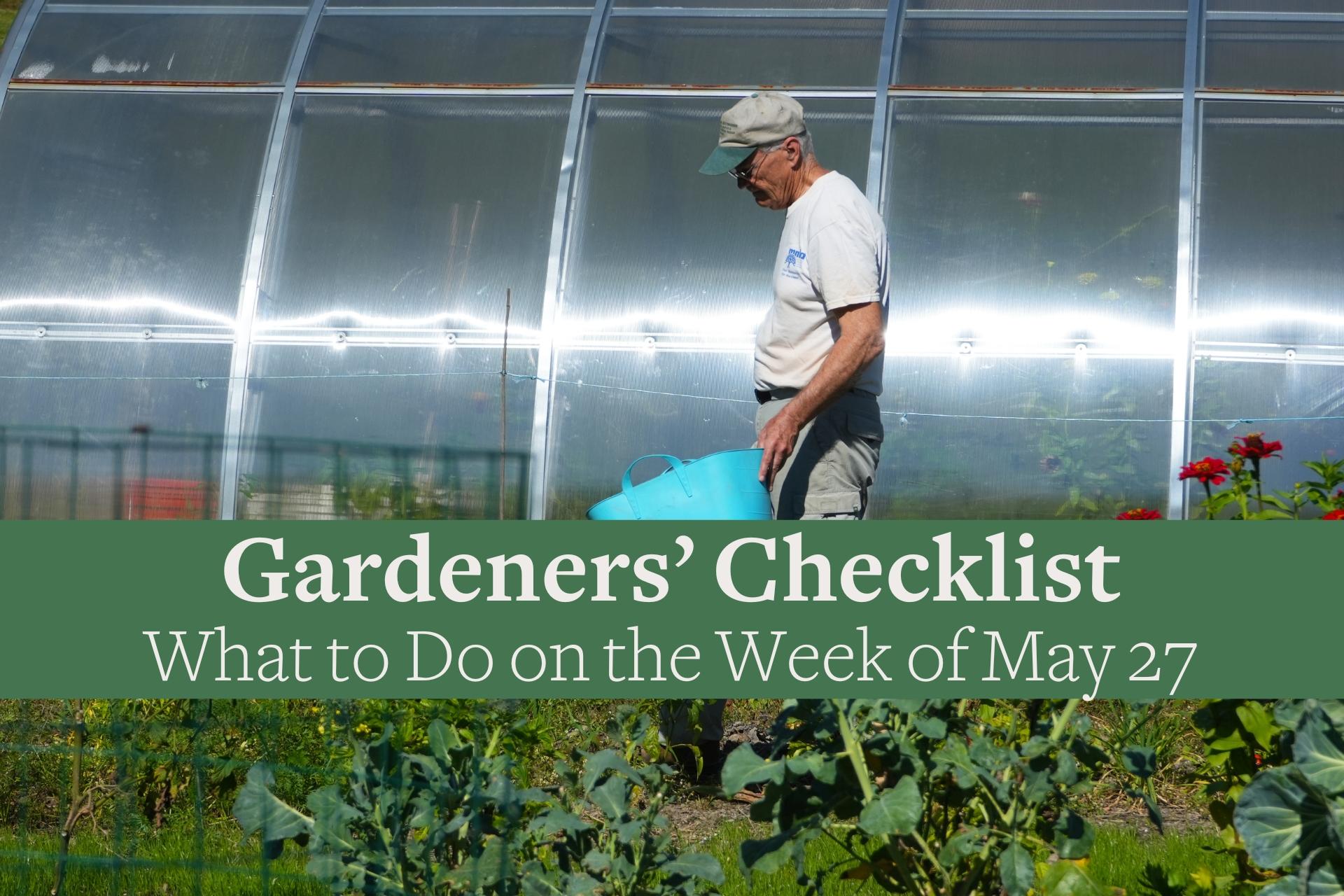You are here
Gardeners Checklist: Here Is What to Do on the Week of May 27
Gardeners Checklist: Here Is What to Do on the Week of May 27
By Ron Kujawski
* Set out transplants of warm season crops if not already done so. These include tomatoes, peppers, eggplants, summer and winter squash, melons, pumpkins, and cucumbers. Placing a lightweight row cover over the plants reduces transplant shock and allows quicker establishment and growth of the seedlings.
* Make additional sowings of arugula, beets, broccoli raab (rapini), carrots, endive, kale, kohlrabi, leaf lettuce (use slow bolting varieties, e.g. ‘Oak Leaf’ and ‘Salad Bowl’), mustard greens, bunching onions, radishes, and Swiss chard.
* Grow frequently used herbs such as basil, cilantro, dill, oregano, parsley, and summer savory in pots in a sunny location nearest the kitchen. Herbs stay cleaner when grown in pots, especially if a layer of pea stone of poultry grit is placed on top of the soil.
* Hill potatoes when they are eight to twelve inches tall. Hilling is done by using a hoe or garden rake to pull some of the surrounding soil up and around the plants, leaving about six inches of the tops exposed. Once plants have grown another eight to twelve inches, a second hilling is typically done. In lieu of the second hilling, you may apply a deep layer of straw around the plants since this makes it easier to dig out the potatoes, especially when mining for a few “new” potatoes.
* Apply a side-dressing of fertilizer to garlic, onions, leeks, and other long season crops that were planted earlier in the season. (Note: garlic is planted in fall.)
* Check Asiatic and Oriental lilies for chewed leaves. If seen, then inspect the plants for half-inch long, bright red beetles with black legs and head. This is the Lily Leaf Beetle. Hand-pick the beetles and check the underside of leaves for beetle eggs, which appear as tan colored lines. Squash the eggs. Products containing the botanical insecticide, Neem, can be applied to plants when the slug-like larvae of the beetle appear, which should be very soon.
***
Long ago, my wife took on the task of being Weeder-in-Chief in our flower gardens. Fortunately, there are no term limits for this self-elected post. However, I have to admit that she has been spending less and less time in this honorable position. That’s because she has gotten quite clever at managing weeds. Her favorite method is to place several layers of newspaper over the soil between plants after an initial weeding. Then, over the paper, she applies an inch or two of composted wood chips, which she has sifted through a half-inch mesh wire screen. I presume pine needles, buckwheat hulls, or other attractive mulches could be used but I leave such crucial decisions to the Weeder-in-Chief. Once in place, no further weeding, except for an occasional invading weed, is required for this year and often the next. Hail to the Chief!
Ron Kujawski began gardening at an early age on his family's onion farm in upstate New York. Although now retired, he spent most of his career teaching at the UMass Extension Service. He serves on Berkshire Botanical Garden’s Horticulture Advisory Committee. His book, Week-by-Week Vegetable Gardener’s Handbook, is available here.
Help Our Garden Grow!
Your donation helps us to educate and inspire visitors of all ages on the art and science of gardening and the preservation of our environment.
All donations are 100 percent tax deductible.



